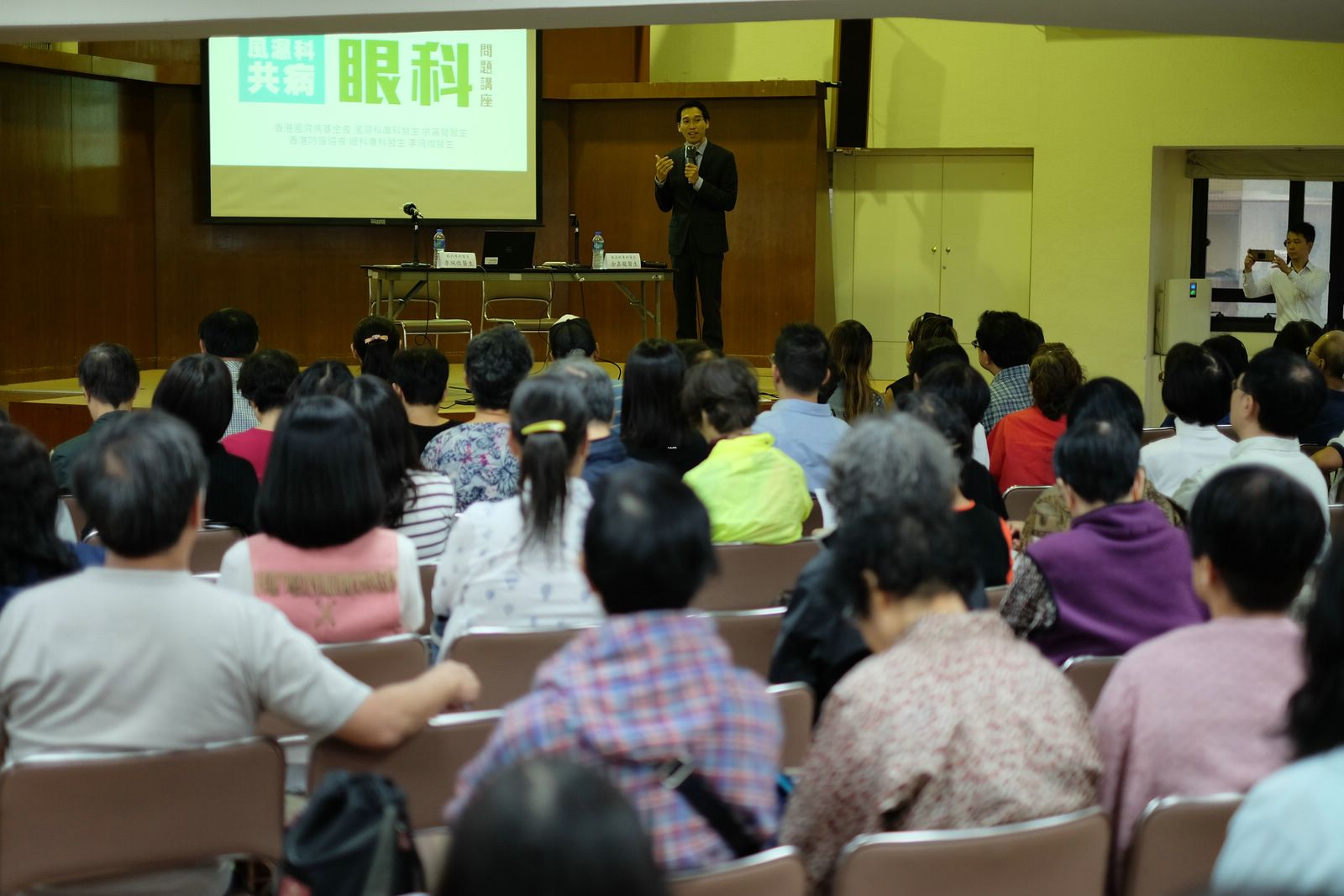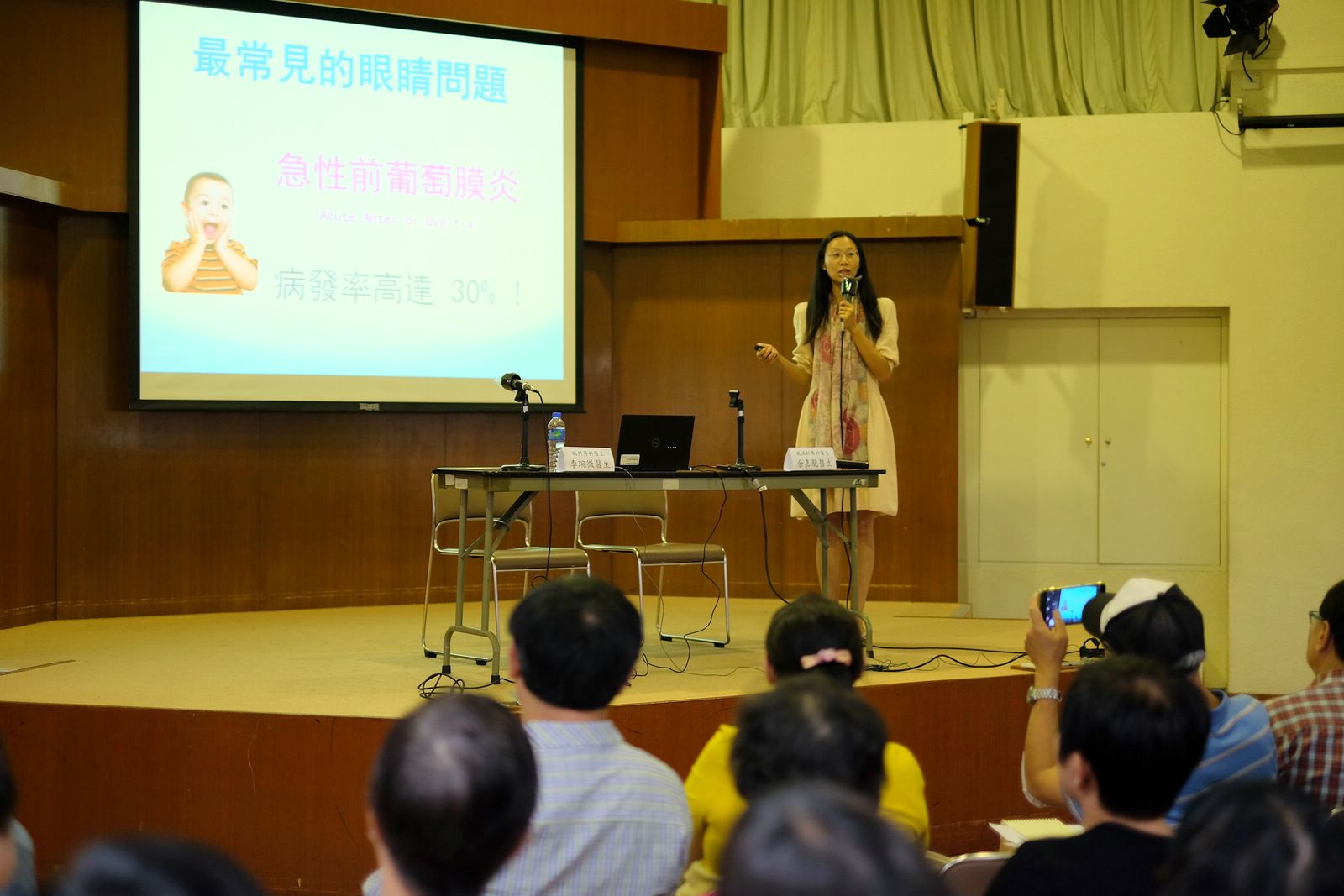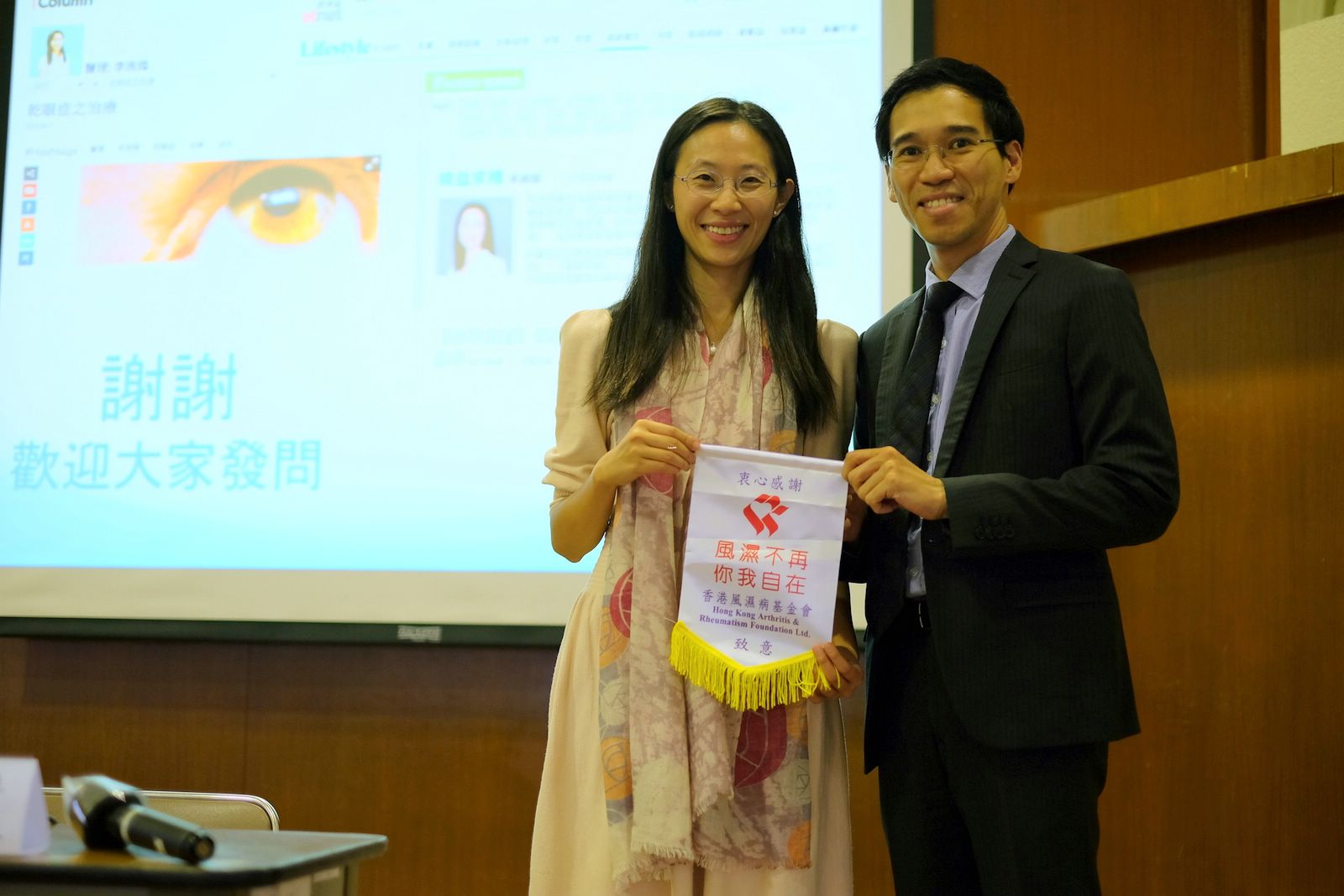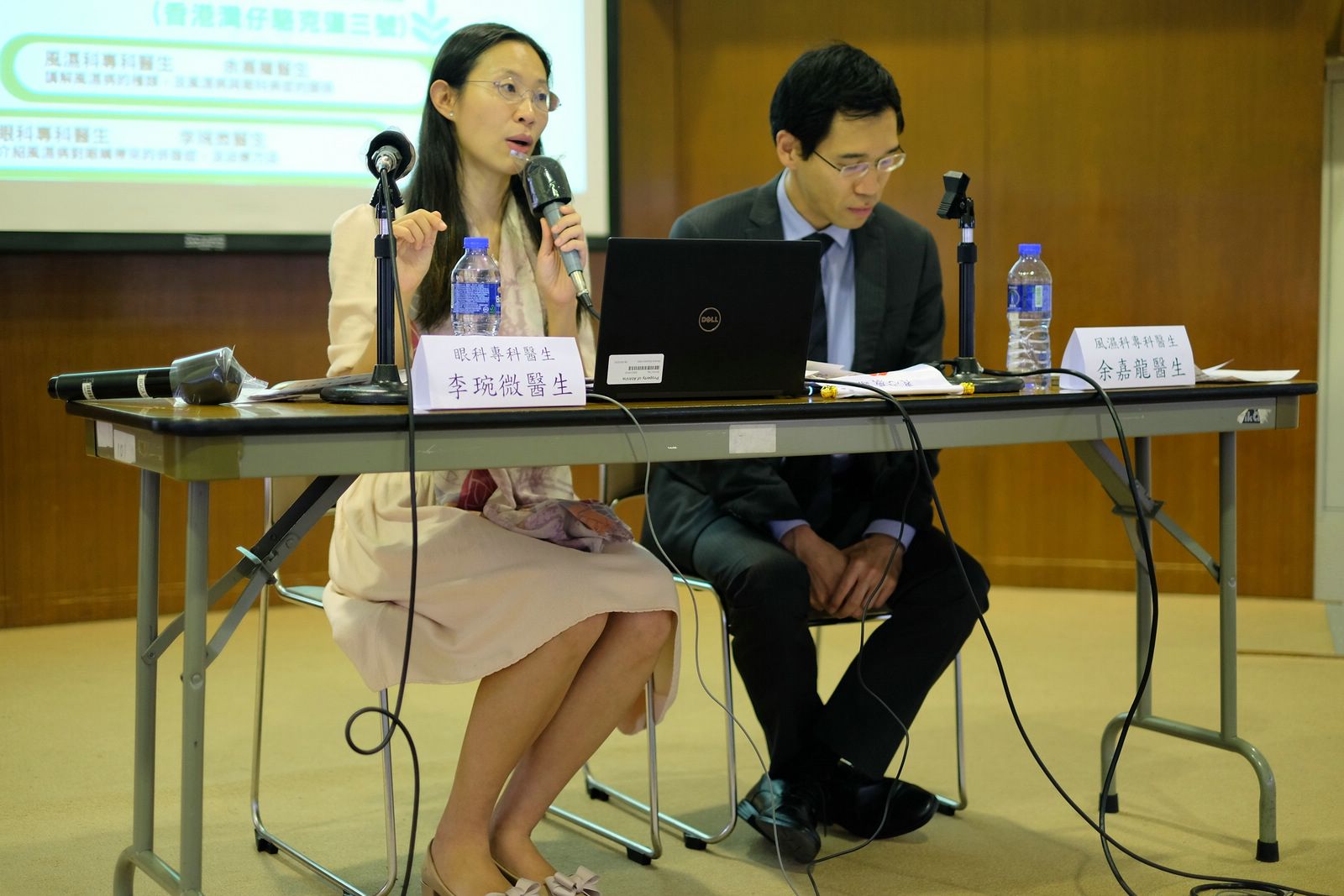
Comorbidity of rheumatic diseases: eye problems
11 November, 2017
Hong Kong Arthritis & Rheumatism Foundation (HKARF) and Community Rehabilitation Network of the Hong Kong Society for Rehabilitation (CRN) jointly organized a talk “Complications of rheumatic diseases: eye problems” on 11 November at auditorium of the Boys’ and Girls’ Clubs Association of Hong Kong. There were a total of 160 participants on that day.
Dr. Yu Ka Lung, a rheumatologist, pointed out rheumatic diseases can cause not only joint discomfort, but also other comorbidities, such as eye pain. During the talk, Dr. Yu has introduced some common symptoms and treatments of eye diseases. For example, patients with rheumatoid arthritis may present with dry eyes and dry mouth when they obtained Sjögren’s syndrome which damages the moisture-producing glands. Moreover, Dr. Yu added that eye discomfort is a possible side effect of long-term use of medications for rheumatic diseases. For example, long-term use of steroids can elevate the intraocular pressure, leading to optic neuropathy and cataracts. Patients with unusual conditions should seek medical attention if necessary.
Dr. Li Yuen Mei, an ophthalmic specialist, described the unseparated connection between ophthalmic diseases and rheumatic diseases before introducing the common eye disorders. Sometimes patients seeking ophthalmology consultation may be referred to rheumatic clinic for further treatment. Patients should not underestimate the outcomes of eye lesions. Dr. Li has mentioned some real examples during the talk: a patient with systemic lupus erythematosus has developed retinal vascular disease, resulting in vision loss; and, a patient with ankylosing spondylitis has developed uveitis, leading to blindness. To prevent deterioration, patients should strictly follow doctor’s instruction. For example, depending on the condition, patients should use the proper artificial tears to moisten the eyes.
The talk gave the public a better understanding of eye comorbidity. Participants were satisfied with the contents and arrangements of the talk, and looking forward to the upcoming talks on related topics.





